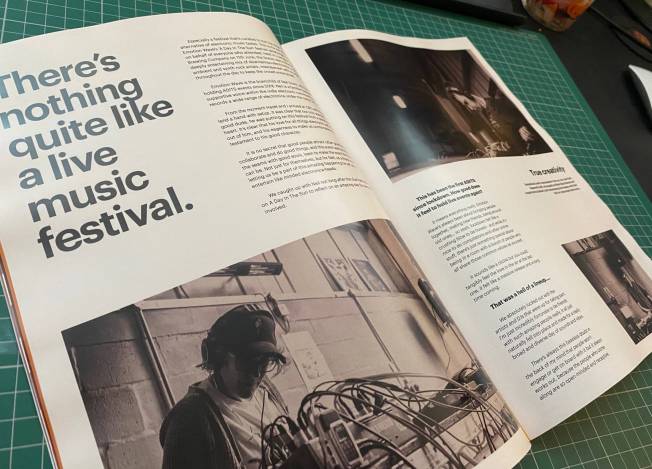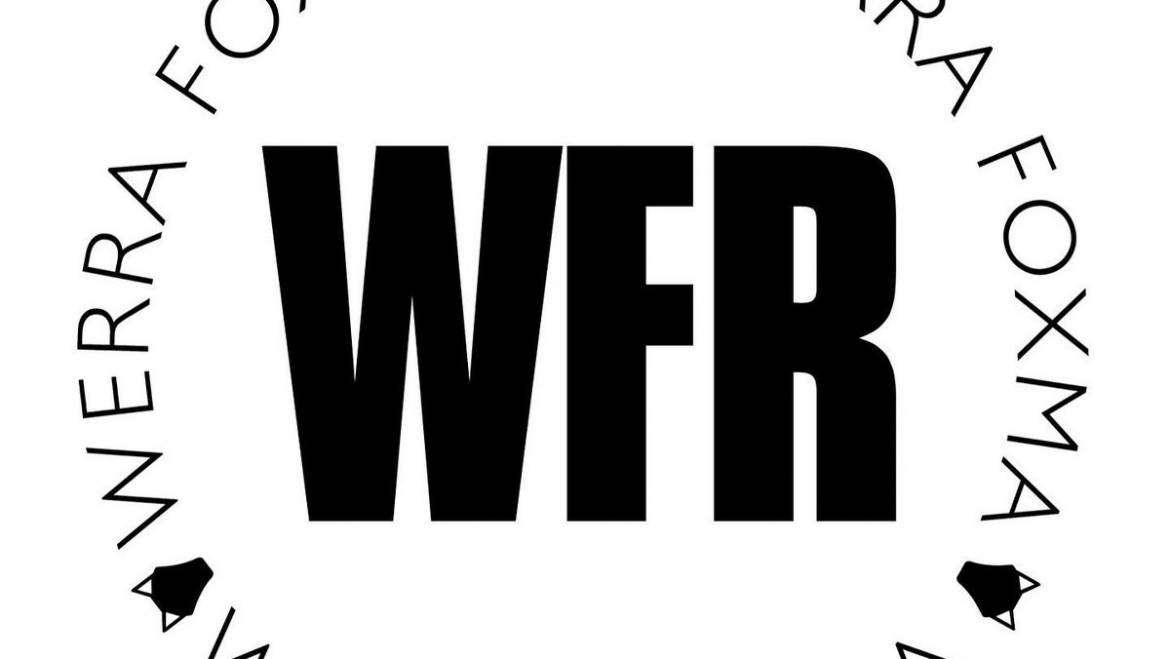In the next instalment of our Zine Scene series, we head north for a full debrief on Edinburgh’s independent electronica zine, Werra Foxma. Rob Smith chatted to zine founder Frazer Brown about the origins of the strikingly-named publication, what to expect and why he feels independent electronica can be a tougher sell north of the border.
How did you come to set up shop and settle on the name Werra Foxma? Any small orange mammals involved?
So the whole Werra Foxma thing started with a tiny recording studio that I built in my back garden in 2015. It was a 9ft x 9ft garden shed with a laptop, speakers and a few guitars. A commercial venture was not really part of the plan until I had some singer/songwriter friends enquire about using it to record in.
Within four years, I side-hustled my way to building a bigger studio, and I was ready to quit my day job in May of 2020 until lockdown happened. That gave me more time than ever to focus on finishing my own musical projects. So I started Werra Foxma Records in June 2020 to release my own output with my band Dohnavùr, side projects, and remixes.
The name comes from a total bastardisation of the English language. About ten years ago, I was packing up my gear after finishing a rehearsal with my old band, and I couldn’t find my car keys anywhere. So I shouted out, ‘Where the fuck’s my car keys?’, and my bandmate shouted back, ‘werra foxma what?’, and it just kinda stuck. We made a logo with a fox tail in the shape of a question mark, and a brand was formed. Five years before it would be put into use. I jokingly refer to it as the Nike swoosh of independent electronica.
Do you think electronic music culture and history in Scotland is given enough coverage in popular music journalism? Was the Werra Foxma mag an answer to this?
It’s a much tougher sell north of the border. We tried to put on an electronic festival in Edinburgh in October and we had to cancel due to a lack of sales. Our issue is that our scene works on the fringes of electronica. Terminal V and old skool rave revival nights are rammed as they are aimed at the masses, to both clubbers, new and old. It’s a challenge to get 50 people in a room for our type of scene. And 80% of our customers are from England, so we have flexed next year to where our fans are more likely to attend future events.
The magazine was originally intended to be an accompaniment to our subscription service. It is tricky to know how many magazines to print as the subs’ number is moveable. So we decided to over-order and sell the rest on our Bandcamp page once we know our subs’ number for that quarter. It’s proving to be quite popular, as we have sold out every magazine we have made so far.

Werra Foxma has its very own SubClub (not to be confused with the Glaswegian rave cave), where followers can subscribe and get all your latest releases as soon as they come out. Was this always part of the plan to grow a following when you established the label?
God, no! The SubClub was a solution to a very uptown problem; we were receiving so many amazing submissions into WFR, but we didn’t want to swamp the label by putting out four albums a month. That’s not fair to both the artists and our loyal customers. So the solution was to release brand new albums every month as part of a subscription service that runs alongside WFR, where the albums are exclusive to subscribers, and the quarterly magazine gets delivered as a part of their subs.
How has editing, laying out and putting together a zine for Werra Foxma compared to mastering tracks for the label? Was it a whole new creative process to learn for you, or was there quite a lot of overlap between the two practices?
I had never done any sort of desktop publishing before, but I have bought enough music magazines to know what it takes to make one roughly. It was very much a voyage of discovery in terms of how to do it, but I know a nice typeface when I see one, and Apple Pages makes it really easy from a design aspect.
A lot of people I know can’t actually believe I don’t use Adobe Illustrator or proper DTP software, and you never know, I might work up to that, but I’ll stick with what I have learned on. As a comparison, it took five years to figure out digital mastering, but I needed to hit the ground running with the magazine.
Have you always had a consistent aesthetic in mind when assembling the mag? Or is every edition pretty distinct from each other design-wise?
It’s consistent up to now, and that’s potentially because I’m still learning the ropes when it comes to curating each magazine. I have taken a lot of inspiration from magazines like Electronic Sound and Moonbuilding. Once I get more confident and more experienced, I might change it up in 2023. I don’t want the aesthetic to be stuck in one place. I want it to evolve as I evolve.
Alongside your label releases and other unique merch, Werra Foxma’s mag is available on your Bandcamp. I’m a massive fan of the platform and get a bit too excited about its slightly clunky, digging-esque layout/format. Why did Bandcamp seem right to sell the Werra Foxma mag on?
Everything we sell in terms of merch is there on Bandcamp, so it was a no-brainer to sell the magazine there too. All the infrastructure is already in place, and it gives our followers a consistent buying experience. If things scale up at the same rate WFR has been scaling up, we might send a small supply of magazines to the five indie stores that stock our vinyl (Piccadilly, Manchester, Tall Bird, Chesterfield, Collect & Survive, Liverpool, Low Port, Linlithgow and Thorne Records, Edinburgh), and see how that goes. Never say never.
If you could pick out any records to sum up the Werra Foxma spirit, which ones would you choose?
You’re getting into ‘pick your favourite child’ territory here, and that just isn’t fair, is it? We truly love everything that we have released so far, but in terms of the pure spirit of WFR, Autumna – Secret Radio ranks pretty high. Emile Wauters was the first artist to ever send in a demo to us, and I was equally amazed/horrified to see that his Bandcamp had 355 tracks across 55 albums, with next to no sales.
So the first thing we did was make a box set retrospective compilation spanning the previous ten years of Autumna output, which sold out within half an hour. That proved to Emile that there was an audience for his music and that he just had to believe in himself. The Secret Radio LP on gold vinyl was the culmination of an 18-month demonstration of the power of positive thinking and true collaboration between artist and label.
Your most recent third issue sold out, but when can we next expect another one from you?
At the time of writing, the next issue is at the printers and will be out at the beginning of January.
The word ‘community’ is getting thrown around more than ever by the music press at the moment. What does it mean to you and/or Werra Foxma?
If it weren’t for the indie electronic community, we would be nothing. We started out in the summer of 2020 very modestly, with CDs in card wallets, 25 at a time. I like to think that we are in the position we are in as a label on merit, but without our electronic community getting behind what we do, we would have folded like a red-hot Mars Bar by now. I also love the fact that our scene isn’t zero-sum, either. For us to succeed, another label doesn’t need to fail. We all support each other, and that’s how it should be.


